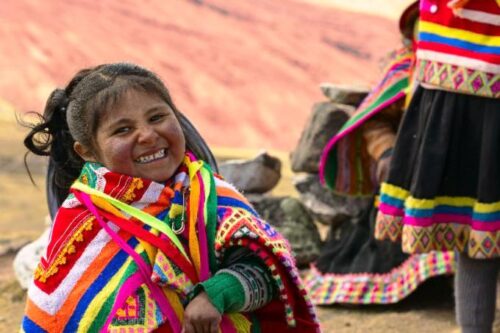Bolivia. The Amerindian Dance that Welcomes The Child Jesus.

In Bolivia, it is the Chuntunqui musical rhythm that leads the celebration of Christmas Eve. A way to help Mary’s birth, to express joy, and to reflect on the difficulties of life.
Christmas is a feast where the joy of the people and the gospel meet. It is God made a man-child; embodied in the fragility and joy that strongly unites the stubborn hope of human beings to live fully. This hope becomes a melody in the Chuntunqui, a musical rhythm that emerges from the Christmas songs. The Chuntunqui is a joyful dance, which combines agility and coordination and is danced during the Christmas period in Sucre, the capital of Bolivia.
Chuntunquis are an important part of Christmas Eve and when they dance in the street, they always generate enthusiasm and in particular attract attention and arouse the participation of the children. Those who participate in this dance often say that the stamping of the Chuntunqui animates the birth of the child Jesus in Mary.

A little girl wearing typical coloured clothes. 123rf.com
It is important that the Amerindians take part in the ritual, and not just be observers. For this reason, at midnight on December 24, young people and children stamp their feet with enthusiasm so that the young Mother, Maria, receives all the encouragement of the Chuntunquis, with songs and dances to the sound of charangos, tamborcillos and pajarillos (two-pronged containers of water that mimic the song of birds). Thus, they express and share the joy of Jesus’ birth. The angel said to them: “Do not be afraid: behold, I announce to you a great joy that will be for all the people” (Lk 2, 10).
At the same time, the Chuntunqui manifests joy at the birth of the Child God who is tenderly called Emmanuel, referring to what Matthew 1:23 says: “The Virgin will conceive and give birth to a child and he will be given the name of Emmanuel, which means: God with us”.
People transform the name Emmanuel into Manuel, calling him Manuelito and in several songs, they sing ‘Niño Manuelito dame buñuelito’. At this time of the year, the bodies occupy a special place; with the zapateo (stamping) they accompany the body of Mary while she gives birth.
Taking care of the fragile little body of the newborn, welcoming God incarnate with the dance of their bodies, songs of joy and looks of love.

Photo : 123rf.com
The arrival of this fragile child, which makes us strong, is welcomed with joy … at the same time, Christmas becomes a space in which the violence and scarcity that bodies suffer, such as hunger, the lack of a roof over their heads, child labour, become visible. The health, working and educational conditions that do not allow children and young people to learn in the warmth of the family. And again, Christmas highlights the urgency of finding a way to support the family and earn more to cover the cost of the many expenses (often superfluous or of little use) that the market offers every year to express the happiness of Christmas.
There are many sad faces in the streets and praying in the churches. It is urgent to live Christmas as the feast where the joy of the people and the joy of the gospel meet. For this we need attentive listening and sharing among all people, to reach a conversion of mentality, of lifestyle and everyday choices. (Open Photo: Watercolour with girl in traditional Bolivian dress, lama, and alpaca pets with cactus desert, stones, and mountains. 123rf.com)
Tania Ávila Meneses



